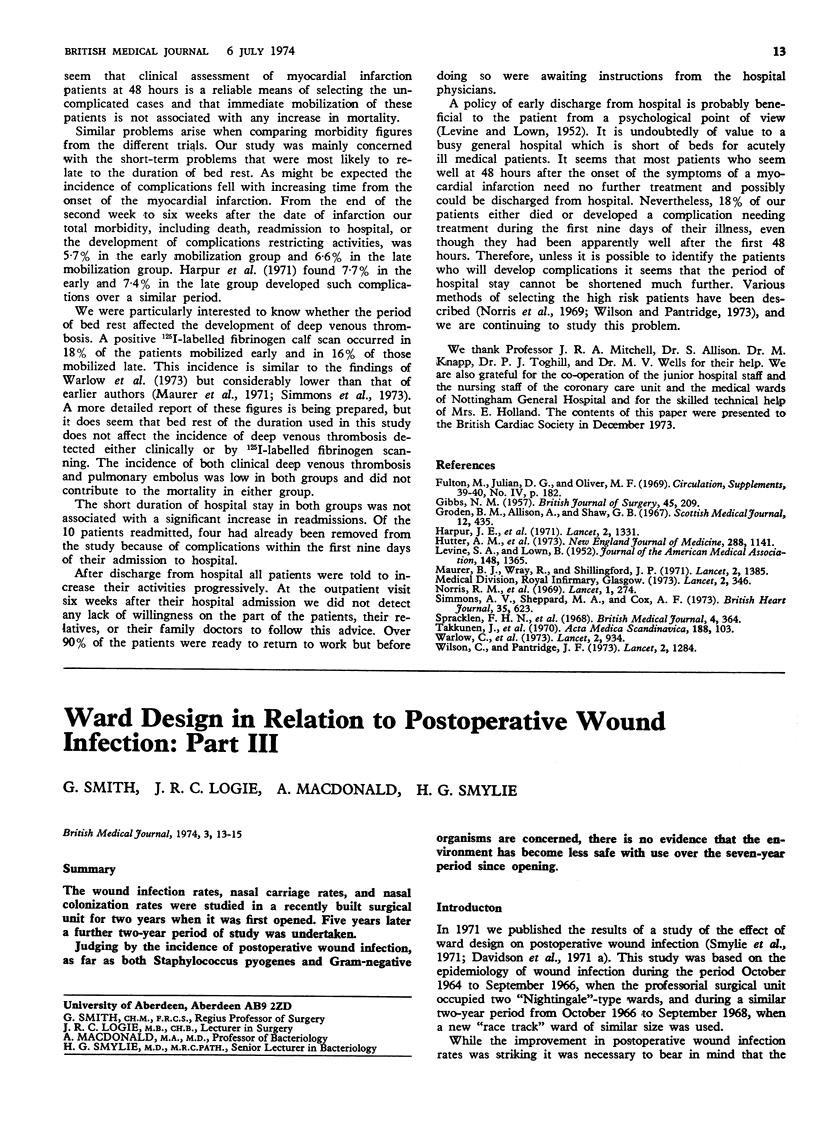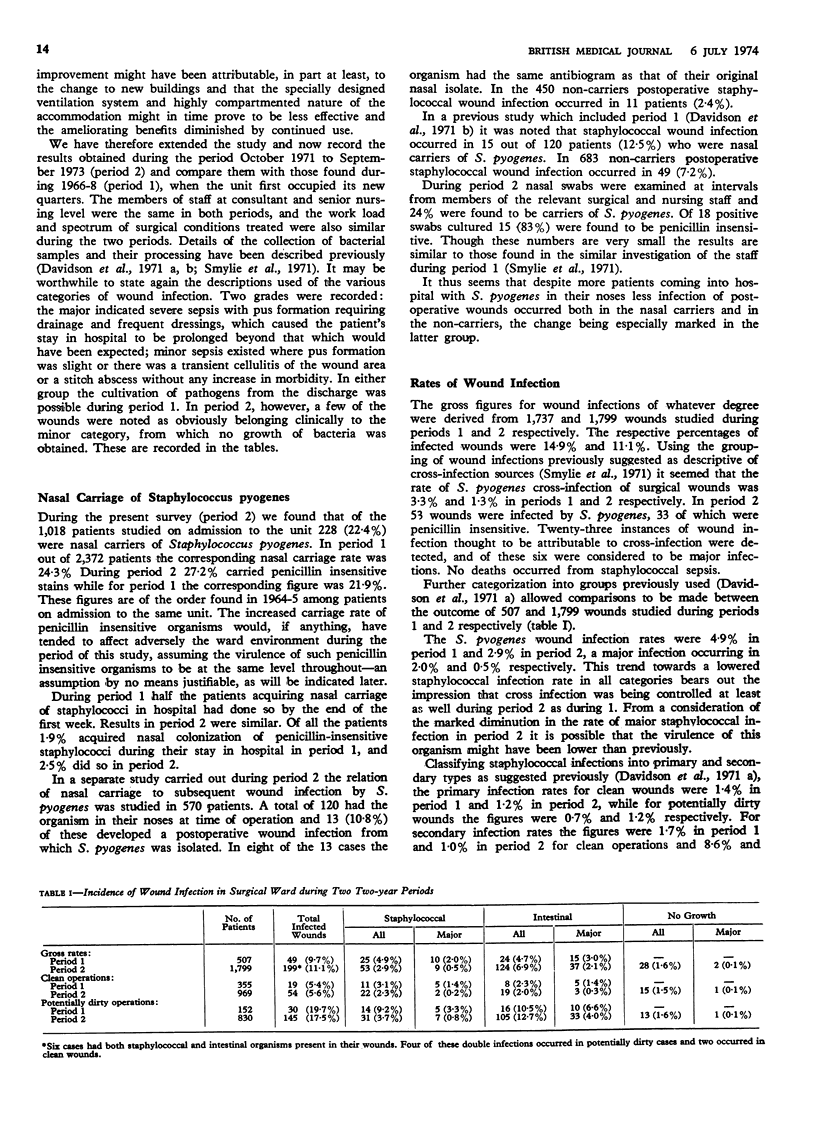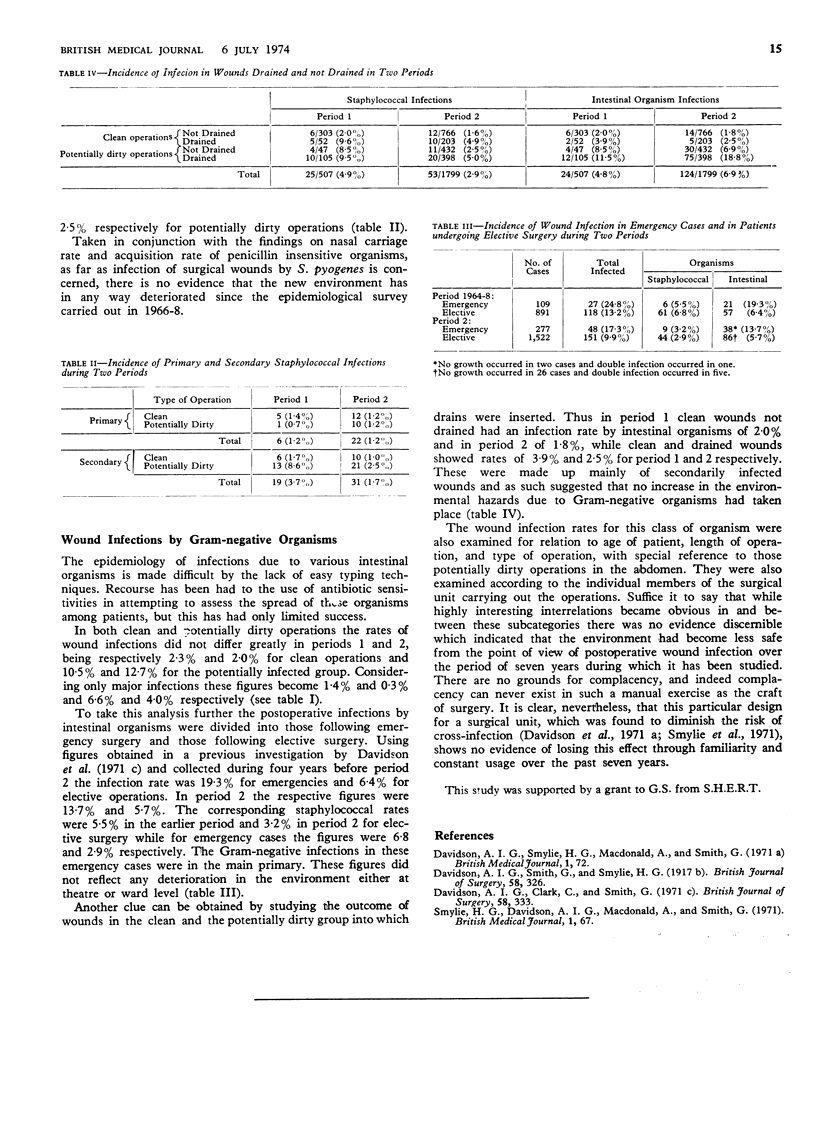Abstract
The wound infection rates, nasal carriage rates, and nasal colonization rates were studied in a recently built surgical unit for two years when it was first opened. Five years later a further two-year period of study was undertaken.
Judging by the incidence of postoperative wound infection, as far as both Staphylococcus pyogenes and Gram-negative organisms are concerned, there is no evidence that the environment has become less safe with use over the seven-year period since opening.
Full text
PDF


Selected References
These references are in PubMed. This may not be the complete list of references from this article.
- Davidson A. E., Clark C., Smith G. Postoperative wound infection: a computer analysis. Br J Surg. 1971 May;58(5):333–337. doi: 10.1002/bjs.1800580504. [DOI] [PubMed] [Google Scholar]
- Davidson A. I., Smith G., Smylie H. G. A bacteriological study of the immediate environment of a surgical wound. Br J Surg. 1971 May;58(5):326–333. doi: 10.1002/bjs.1800580503. [DOI] [PubMed] [Google Scholar]
- Smylie H. G., Davidson A. I., Macdonald A., Smith G. Ward design in relation to postoperative wound infection. I. Br Med J. 1971 Jan 9;1(5740):67–72. doi: 10.1136/bmj.1.5740.67. [DOI] [PMC free article] [PubMed] [Google Scholar]


